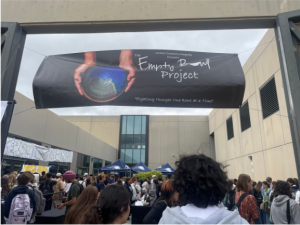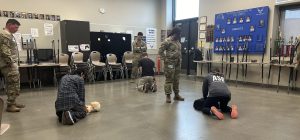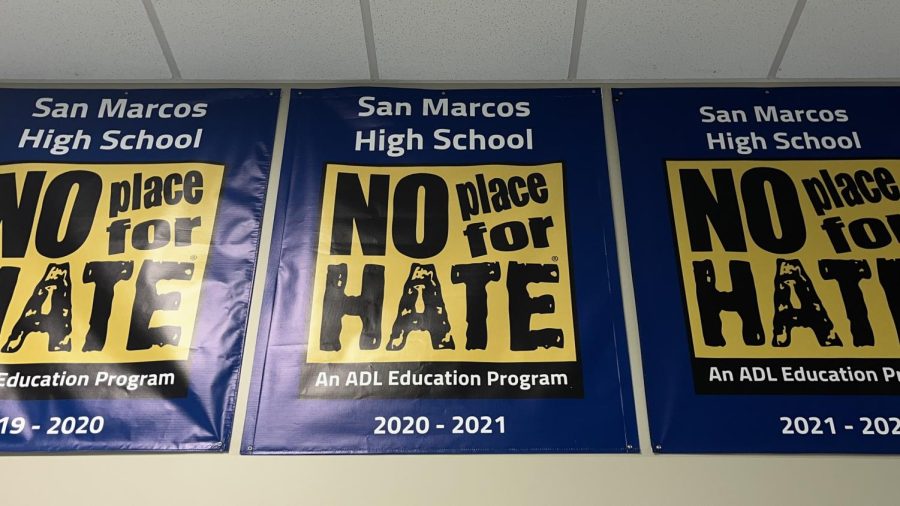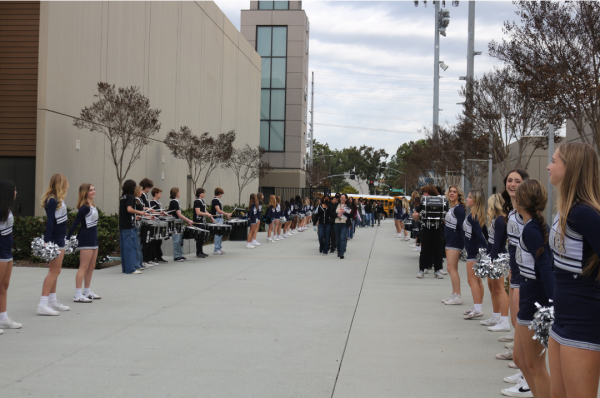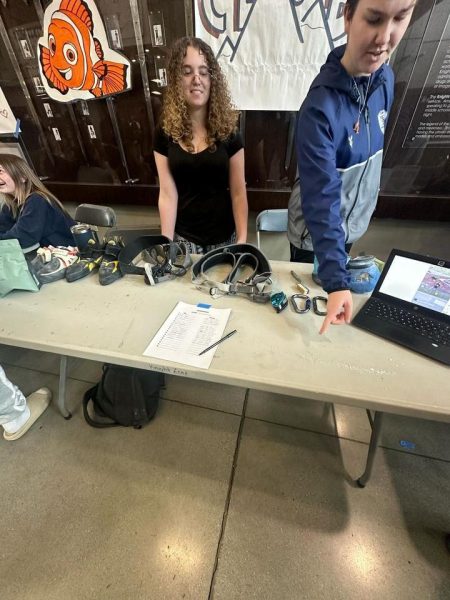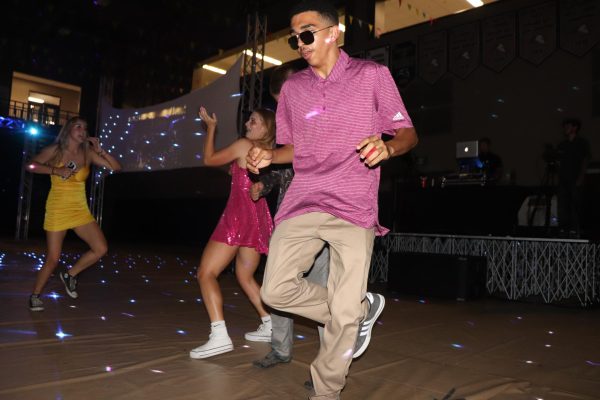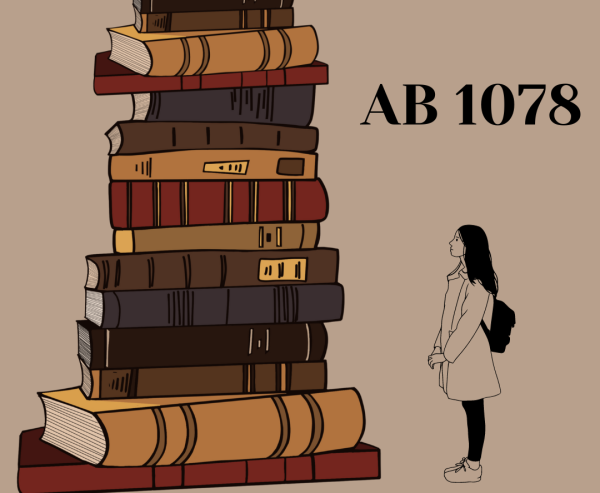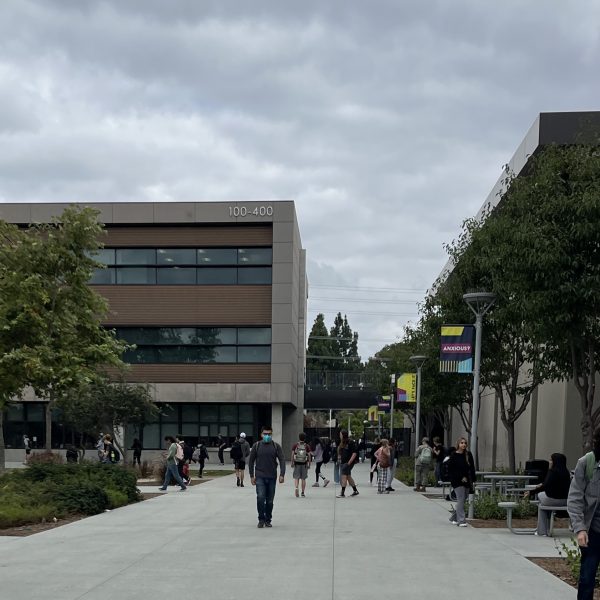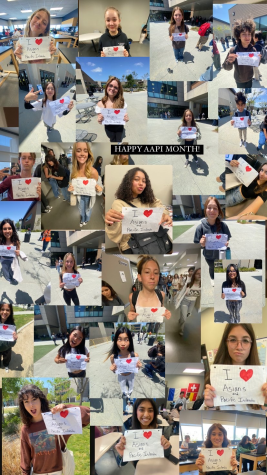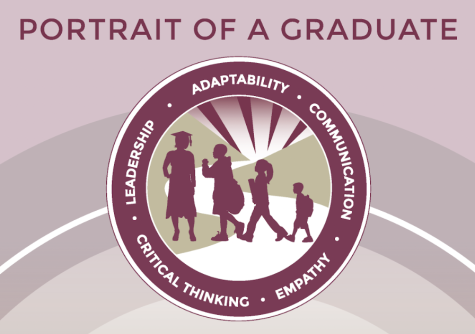Day of Silence: Students Stand In Solidarity
Silence speaks louder than words
No Place for Hate banners hanging near the student union at San Marcos HIgh School.
Hundreds and thousands of students report being bullied in high school and many more unreported. On April 18, instead of laughter and screams that usually occur in the halls, silence filled the air and instead solidarity took place. No place for Hate is a program implemented at San Marcos High School. NPFH is a call to action towards bullying and harassment especially towards the minority groups on campus. As more participants joined, and more voices were heard, the program found its way through student union clubs which ultimately led to a movement known as “The Day of Silence.” On April 18, the students who wished to participate, represent groups and minorities in whether they stand in or they want to speak out for and dedicate that day to not talk. This day of silence can have a variety of purposes depending on the person. The phrase “silence speaks louder than words” is something all participants can agree on what the movement’s purpose is. I asked both teachers and students that are passionate about the No Place for Hate program and/or participated in the Day of Silence on April 18 on their feelings towards what this means for the future of not only the school, but the world and society as a whole.
Jaclyn McKenzie is a teacher at SMHS who has always been interested in the No Place for Hate program and wanted to introduce it on campus for the students. Social worker Michelle Atkins, also has a big role in this program.
“I as well as Ms. Atkins… co-advised the No Place for Hate club to help facilitate kids planning those three activities…and worked directly with the anti-defamation league…” McKenzie said.
NPFH is not only for students, but it’s for students. Students acknowledging that they are being noticed is a major step in why this program is what it is today. It’s a program that continues to prove the inclusivity on campus and what makes both students and teachers realize that things need to get done in order to better the SMHS campus and society as a whole.
I think it’s important for kids to know school is a safe place and it’s a place where they can come and learn and come be a part of a community without feeling like they’re not accepted or not wanted — Mckenzie
“I think it’s important for kids to know school is a safe place and it’s a place where they can come and learn and come be a part of a community without feeling like they’re not accepted or not wanted. I think No Place for Hate…puts a stamp on our school saying something we don’t agree or accept or tolerate…It just shows we’re working towards a more inclusive campus and making more kids feel welcome,” McKenzie said.
Involving students, especially students in minority groups and students who are underrepresented, is what makes this program have a meaning. Because of COVID, No Place for Hate had to rebuild itself. Personally, I think this program is going to be made into something that will leave a lasting impact not only to students leaving in the next couple months, but also the students that are going to experience high school for the next four years.
“Absolutely, I think we were gaining a lot of great momentum before COVID…then COVID happened and we lost a lot of our seniors…so we’re kind of in the rebuilding stages of the club…we’re trying to build back the momentum we once had. I think really what we focus on is trying to get help from ASB and other student union clubs to build us up more… to combat those incidents of racism and hate on our campus,” McKenzie said.
When rebuilding occurs, change is inevitable. To me, change is something that enforces growth and is beneficial as a whole. What needs to be changed within No Place for Hate?
“I think a lot of people need to be participating…I think there needs to be a discussion piece with it…people are going to be walking around silent for a day and that’s it and that didn’t really share the message of what we should be doing…advertising why it’s important that were participating in this because it’ll bring awareness to the reasons on why people are being oppressed…and it will have people think twice about how they act and how they behave,” McKenzie said.
Bullying and harassment has always been an issue in schools. Students walk in knowing that it’s a problem but many don’t do anything about it. We learned to not be a bystander and to stand up to bullies in elementary school but how efficient is that going to impact real life situations? Bullying has always been an issue but will bullying ever have an end?
“I hope so…I think it will take a lot…I think it would have to be not even just our school. I think it will have to be a much larger initiative and a lot more educating on why we shouldn’t be acting the way people have been acting and why it’s harmful and hurtful…but it’s important to be aware and acknowledge rather than bringing them down. Would I love there to be no more bullying and no more hate and no need for No Place for Hate? Absolutely! I think it will take a very very very long time,” McKenzie said.
Senior Aryn Prieto participated in the Day of Silence. He is both driven by the No Place for Hate program as well as what the Day of Silence means for them.
“For me it just means as a campus, we’re actively working towards making it more inclusive and diverse for students and ensuring people feel safe rather than feeling like they’re going to be harassed or bullied. Through the implementation of the program, it allows us to create a safer space for everyone,” Prieto said.
Prieto continues, “I represent Rainbow Club and I am a part of multiple different communities on our campus. Participating on that day to me is empowering because it shows that I have been a part of groups that have been silenced either on campus or outside of campus…representing voices that may not be heard…especially trans voices across the U.S. since there is a lot of legislation going around against that. To me, Day of Silence is for me to represent my queer and trans identity by… showing that I stand in solidarity.”
Now more than ever, students are speaking up about bullying and harassment like never before. Students are gaining their voice and speaking out about the problems many face on campus. Movements like the Day of Silence is just the beginning of what SMHS will continue to initiate throughout the years to not only raise awareness of this problem, but put a stop to it completely. Progressing with a purpose is key to the goal. It is one thing to be silent but another to be silent with a purpose.
